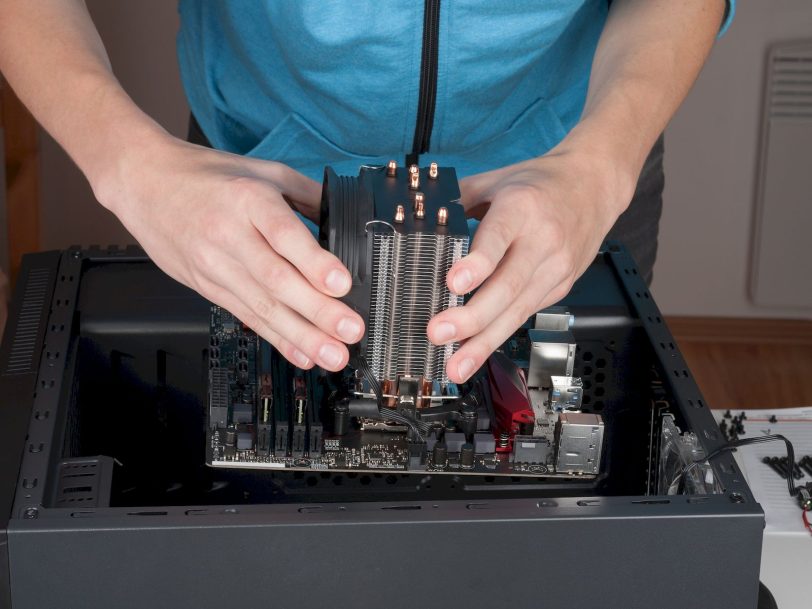What is Motherboard Form Factor?

A motherboard’s form factor doesn’t just affect the size of the motherboard, as some believe. It also goes even further, such as compatibility with other elements such as the case and even the power supply. Therefore, before choosing a motherboard, you should know a little better about this aspect, the types available and their features.
What is the form factor of a motherboard?
A motherboard’s form factor is a specification that refers to a few standard details:
- Base plate dimensions
- Type of power supply connector required
- Hole locations for chassis or mounting
- Number of ports on the back panel
- Other factors
This standardization is done so that motherboards are equally compatible with PSUs regardless of manufacturer. This has been the case since the IBM PC era, but has now spread to other industries, such as servers and HPC, which also use standard form factors.
Mevcut Form Faktörleri

- XT: Introduced by IBM in 1983, it measures 216x279mm. Currently obsolete.
- AT: 305×279-330 mm in size, it was also created by IBM one year after the previous one. Used in IBM PCs with Intel 80286.
- Baby AT: This other IBM was created in 1985 as the successor to the AT, with dimensions of 216 × 254-330 mm.
- ATX: Created by Intel in 1995 with dimensions of 305×244 mm. It dominated the market until 2017.
- microATX: A format with smaller dimensions introduced in 1996, 244×244 mm.
- mini-ATX: First introduced in 2005 by Intel’s AOPen and came in 150×150 mm size.
- FlexATX: Designed by Intel in 1999 as a subset of microATX, providing greater flexibility and a maximum size of 228.6 × 190.5 mm.
- Mini ITX: It was created by VIA Technologies in 2001 and has a very small size of 170×170 mm.
- Nano ITX: Some media centers, miniPCs, etc., from VIA in 2003. 120x120mm for another form factor.
- Pico-ITX, Mobile-ITX: VIA introduced them in 2007, in sizes 100x72mm and 75x45mm, respectively.
- Neo-ITX: Introduced by VIA in 2012, 170x85x35mm dimensions are used in this company’s Android PCs.
- Mini-STX: Intel is back again in 2015 with this motherboard form factor. Its size is 147x140mm, smaller than MiniITX and larger than NUC.
- BTX, MicroBTX or uBTX and PicoBTX: introduced by Intel in 2004 in sizes 325x267mm, 264x267mm and 203x267mm, respectively.
- DTX: Introduced by AMD in 2007 in 200×244 mm dimensions.
- ETX: Created by Kontron in 1999 for embedded systems.
- EATX: 305x330mm for servers. Supermicro also introduced a variant of its own called EEATX, namely Enhanced EATX in 347x330mm dimensions.
- LPX and Mini LPX: These Western Digital standards have dimensions of 229×279-330mm and 203-229×254-279mm, respectively.
- NLX: From Intel, created in 1999 and measures 203-229×254-345mm.
- UTX: Used by TQ-Components for embedded systems in 2001.
- WTX: Intel introduced 355.6 × 425.4 mm dimensions for servers in 1998.
- SWTX: It is derived from Supermicro, WTX and is 418x330mm for servers.
- HPTX: Created by EVGA in 2008 with dimensions of 345×381 mm.
- XTX: From Ampro/Congatec, created in 2005 for embedded systems and measuring 95x114mm.
As you can see, there are no references to laptops in this list. And these systems don’t use standard form factors, but the motherboard is specifically designed to fit the laptop’s chassis and the number of ports and placement where needed. In short, every laptop is unique, but some formats are reusable for various models and even various brands.
In addition, even the same models of the same brand may have different layouts, different processors, different memory, etc. Having many elements integrated or soldered onto the board makes standardization difficult.